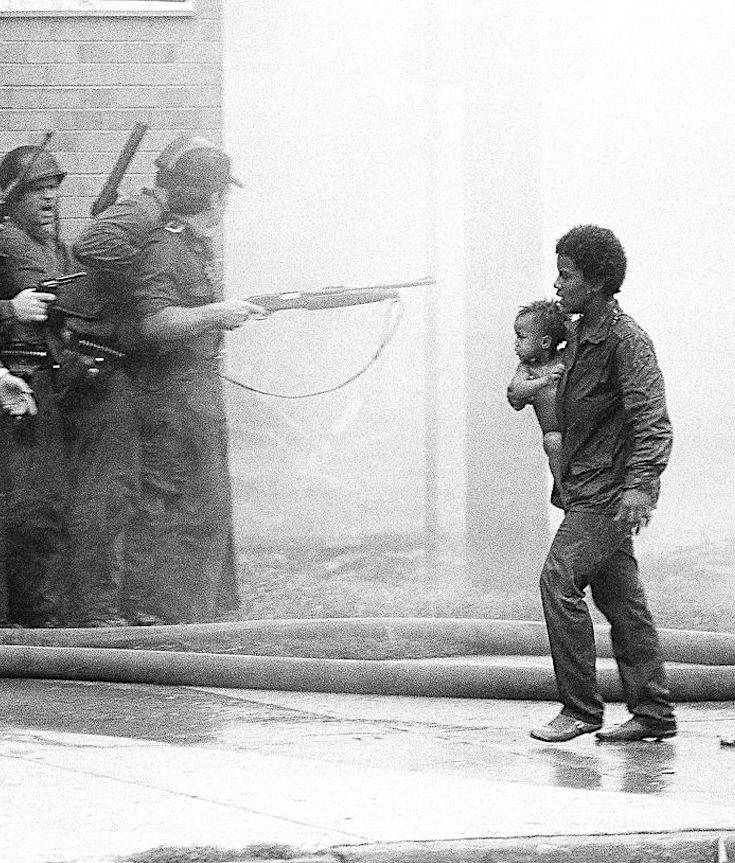Thirty-one years after a police bomb set the 6200 block ablaze, destroying 61 homes, city officials hope to finally remedy the block’s continuing problems created by the abandonment of poorly constructed replacement homes.
City officials now say they want to restore the community, help it heal and move forward. A request for proposals was issued last week seeking a developer to purchase and develop 36 vacant properties along the 6200 blocks of Osage Avenue and Pine Street.
[mc4wp_form id=”6042″]
“We’re overjoyed,” said Gerald Wayne Renfrow, 70, president of the Osage Pine Community Association and a native of the 6200 block of Osage.
 Photo | Guardian Life Magazine
Photo | Guardian Life Magazine
MOVE is a Philadelphia-based black liberation group founded by John Africa (born Vincent Leaphart) in 1972. The group lives communally and frequently engages in public demonstrations against racism, police brutality, and other issues.
The group is particularly known for two major conflicts with the Philadelphia Police Department. In 1978, a standoff resulted in the death of one police officer, injuries to several other people and life sentences for nine members. In 1985, another standoff ended when a police helicopter dropped an explosive device on their compound causing a fire, which was a row house in the middle of Osage Avenue. This killed eleven MOVE members, including five children. Fire destroyed 65 houses and prompted widespread news coverage.
1985 Bombing
In 1981 MOVE relocated to a row house at 6221 Osage Avenue in the Cobbs Creek area of West Philadelphia. After the move, neighbors complained for years that MOVE members were broadcasting political messages by bullhorn. However, the bullhorn was broken and inoperable for the three weeks prior to the bombing of the row house.
The police obtained arrest warrants charging four occupants with crimes including parole violations, contempt of court, illegal possession of firearms, and making terrorist threats. Mayor W. Wilson Goode and police commissioner Gregore J. Sambor classified MOVE as a terrorist organization. On Monday, May 13, 1985, the police, along with city manager Leo Brooks, arrived in force and attempted to clear the building and execute the arrest warrants. This led to an armed standoff with police, who lobbed tear gas canisters at the building. The police said that MOVE members fired at them; a gunfight with semi-automatic and automatic firearms ensued. Commissioner Sambor then ordered that the compound be bombed. From a Pennsylvania State Police helicopter, Philadelphia Police Department Lt. Frank Powell proceeded to drop two one-pound bombs made of C4 explosive (which the police referred to as “entry devices”) made of FBI-supplied water gel explosive, a dynamite substitute, targeting a fortified, bunker-like cubicle on the roof of the house.
The resulting explosions ignited a fire from fuel for a gasoline-powered generator in rooftop bunker that eventually destroyed approximately 65 nearby houses. The firefighters, who had earlier deluge-hosed the MOVE members in a failed attempt to evict them from the building, stood by as the fire caused by the bomb engulfed the first house and spread to others, having been given orders to let the fire burn. Despite the earlier drenching of the building by firefighters, officials said that they feared that MOVE would shoot at the firefighters. Eleven people (John Africa, five other adults and five children aged 7 to 13) died in the resulting fire and more than 250 people were left homeless. Ramona Africa, one of the two survivors, stated that police fired at those trying to escape.









You must be logged in to post a comment.